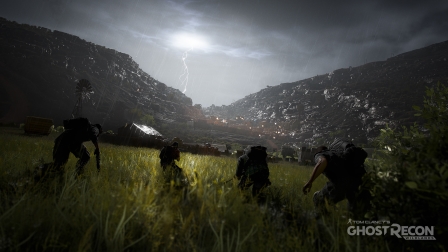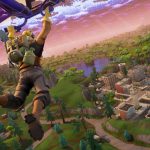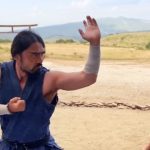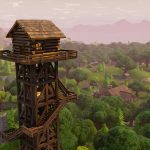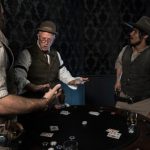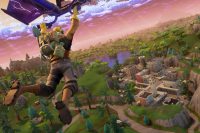Ghost Recon Wildlands – Building a Reactive World
Ghost Recon Wildlands – Building a Reactive World
Flying in a helicopter over Ghost Recon Wildlands’ version of Bolivia gives you a moment to take in the vastness of the world the development team has built – one of Ubisoft’s biggest yet. As you survey the landscape, it becomes clear why Ubisoft Paris selected Bolivia. Not only does its coca-plant industry, and the implications that has for drug cartels, make it an ideal setting for a Tom Clancy game, but it’s also a place of great natural beauty that offers a diversity of environments seen in few other places on our planet.
“We decided from the very beginning that Bolivia would be the location for the game because it was a good match for a Tom Clancy game,” says Benoit Martinez, lead artist and technical art director at Ubisoft Paris. “We know where it is, but not everyone’s been there. It gives a lot of opportunities for us to create a landscape that lets players discover this country and this culture.”
Outside of obvious landmarks like the Red Lake, officially known as Laguna Colorada, there were certain characteristics of Bolivia the development team was keen to identify. Things that would tie the virtual version of the country to the real-world one in more subtle ways. To do that, they traveled to Bolivia and spent weeks travelling the country, snapping photos, taking video, and speaking with people.

“The biggest challenge was to define our world,” says Martinez. “We went to Bolivia for a couple of weeks, and dispatched the team between the north, south, east, and west regions of the country. We were everywhere, from the Altiplano to the death road, jungle, islands, and everything in between.” And to give you an idea of the dedication it takes to venture onto Bolivia’s death road, the BBC called it the “world’s most dangerous road” in 2006.
The team also visited coca fields to talk with the people who grow and cultivate the crops, getting to know more about their day-to-day lives in Bolivia. “It was so important for us to learn about [this country],” he adds. “We came back with something like 15,000 pictures and 10 hours or more of video. It took us more time to sort out all the references from Bolivia than to take the actual pictures.”
From there, the team started building its world and determining its scope by asking several key questions: How far should it be between objectives? What is the density of objects in the world? How many settlements will there be? Simply replicating the real-world Bolivia wouldn’t necessarily make for a good gaming experience. “It’s not the real Bolivia,” Martinez says. “We have to level-design our world and make it interesting to the player by always giving them something new to discover.”

As a result, Ghost Recon Wildlands has over 11 different biomes, ranging from arid desert and mountains to dense, humid jungle, along with 150 specific locations that include villages, outposts, and landmarks. Tying this all together are enemies from the Santa Blanca cartel, rebels, corrupt government forces, and the residents of Ghost Recon Wildlands’ Bolivian provinces going about their day (not to mention the native wildlife). All of them react not only to their world and immediate surroundings, but also to how the Ghosts proceed with their mission. To those of us not familiar with the ins and outs of game development, this would seemingly require a delicate behind-the-scenes balancing act that ensures all aspects of the virtual Bolivia and its inhabitants behave as they should.
That balancing act is actually what the development team calls “world logic,” and it’s a philosophy they’ve been honing since work began on Wildlands. “World logic and consistency were very important in defining the biomes, in defining the provinces, in defining the city, and defining the NPCs themselves,” says Martinez. “If we have a village somewhere, we need to make sure the agriculture is consistent with the landscape. We had to make sure there’s always a purpose for an NPC to leave somewhere, to do a specific activity, or to go to work.”

What makes that world logic possible is a powerful set of development tools that not only helped the environmental artists build Wildlands’ Bolivia, but also helped them iterate quickly when playtesting revealed problems with placement of objects, roads, or other issues. “We have hundreds of specific tools that let us do everything from populating rocks, building villages, scattering objects to pushing the electric lines,” Martinez says. “We’ve created a lot of tools to be able to push content and keep control [over the environment].”
In fact, according to Martinez, each level artist is working on an equivalent area that would represent a full-size world in other games, making the task of managing it all that much more impressive. “The purpose of [our tools] is to offer better design quality, because the tools themselves are not going to define the quality,” he adds. “But because of our tools, we can iterate even more. If we did it the traditional way, with less tools and more work, we would maybe create a forest once, and then treat it twice because it would take too much time [to do it more than that]. Now, there are some places in our world where we’ve been able to define the terrain as much as we want.”

All of this work on Bolivia and its environments will come to the forefront when we play the game, but Martinez’s team has more immediate beneficiaries in mind: their coworkers. “[Our goal] for building this world was to not only focus on the fact that it was a Ghost Recon game where you infiltrate camps and shoot bad guys,” Martinez says. “It was about creating a world and giving it to the people designing the missions, designing the story, and giving them an opportunity.”
Ghost Recon Wildlands is scheduled for release on Xbox One, PS4, and PC on March 7. For more on the game, check out our previous coverage:
Ghost Recon Wildlands – Nighttime Infiltration Walkthrough Features Stealth Tactics
Ghost Recon Wildlands – Four Things You Need to Know About Customization
Ghost Recon Wildlands – Cooperative Tactics Q&A With Dominic Butler
The post Ghost Recon Wildlands – Building a Reactive World appeared first on UbiBlog – Ubisoft®.
(66)

